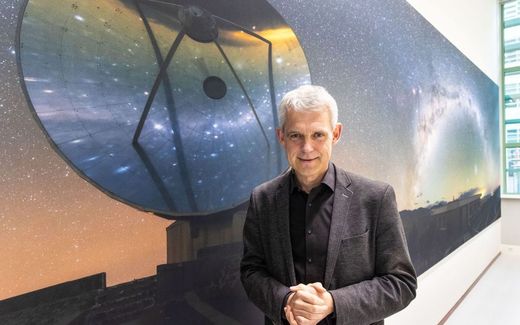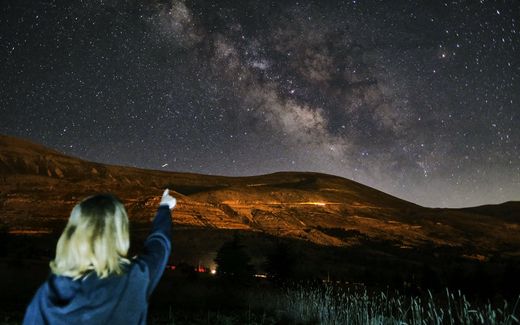Astronomers' discovery evidence of extraterrestrial life?
29-04-2025
Christian Life
Bart van den Dikkenberg, RD

Space telescope Euclid reveals a new "galaxy cluster" that contains several different galaxies called Abel 2390. Photo AFP, ESA.
Christian Life
Scientists have finally found strong evidence of life elsewhere in the universe. The James Webb Space Telescope helped them in their search. However, the question remains whether their measurements are conclusive.
One of the James Webb Space Telescope's most important tasks is to search for extraterrestrial life. Scientists now believe they have found it in the atmosphere of the exoplanet K2-18b, a planet orbiting a star outside our solar system. What makes K2-18b, which is 8.6 times heavier and 2.6 times larger than Earth, so special is that it is located in the so-called habitable zone: in theory, life could be possible there.
What was found?
Astronomers led by the University of Cambridge (UK) have detected the presence of dimethyl sulphide (DMS) and dimethyldisulphide (DMDS) in the atmosphere of exoplanet K2-18b, they write in the scientific journal The Astrophysical Journal Letters.
These substances are produced in chemical factories. However, apart from living microorganisms, including phytoplankton in the oceans, DMS and DMDS are not produced by any other means. These substances are not formed on Earth by spontaneous chemical reactions in the natural environment. This leads scientists to believe that this is also the case outside Earth. The source of both substances could possibly be a living organism on the exoplanet.
Astronomers had previously discovered methane and carbon dioxide in the atmosphere of exoplanet K2-18b. Both substances could also have a biological origin. Furthermore, astronomers suspect that exoplanet K2-18b is partially covered with water. And water is one of the essential substances for life to exist. The astronomers’ measurements of the exoplanet corresponded with predictions for a so-called Hycean planet: a habitable world covered with oceans and an atmosphere rich in hydrogen.
How certain is it that extraterrestrial life has been found on the exoplanet?
“The signal was strong and clear”, says Nikku Madhusudhan, professor at the Cambridge Institute of Astronomy, who led the research. The scientists estimate the probability that an abiotic, i.e. non-living, source is the cause of the presence of DMS and DMDS at 0.3 per cent. And that is small. Madhusudhan says he has not yet claimed a definitive discovery. Although his enthusiasm in the press release fuels the idea that a scientific breakthrough has been achieved, he also indicates that more research is needed.
What do other scientists think of the discovery?
Research into DMS in the dust of comet 67P/Churyumov-Gerasimenko led scientists led by Nora Hänni, an astronomer at the Physics Institute, Space Research & Planetary Sciences at the University of Bern, to conclude that there must be an abiotic way in which DMS is created in the universe. The cause is, therefore, a spontaneous chemical reaction in the universe. This does not involve any microorganisms.
Research led by Miguel Sanz-Novo of the Spanish research centre Centro de Astrobiología, published last February in the journal The Astrophysical Journal Letters, showed that abiotic sources of DMS and possibly DMDS may indeed exist in the universe. They found DMS in an interstellar dust cloud in space. Their conclusion is: “This discovery provides decisive observational evidence for efficient abiotic production of DMS in interstellar space.”
The authors of both articles write that their discovery makes them doubt whether DMS is a reliable substance for detecting life in the universe.
So?
The desire of astronomers at the University of Cambridge could be wishful thinking. Research leader Madhusudhan believes that with the James Webb Space Telescope, science is “taking new steps” to answer “the most essential question”: “Are we alone? This could be the turning point.”
Current science assumes that all life on Earth arose spontaneously through random processes. From an evolutionary perspective, it is therefore unlikely that life appeared only on Earth; why not elsewhere in the universe? The search for extraterrestrial life has been hyped for decades, but to date, there is no conclusive evidence.
This article was translated by CNE.news and published by the Dutch daily Reformatorisch Dagblad on April 17, 2025
Related Articles








